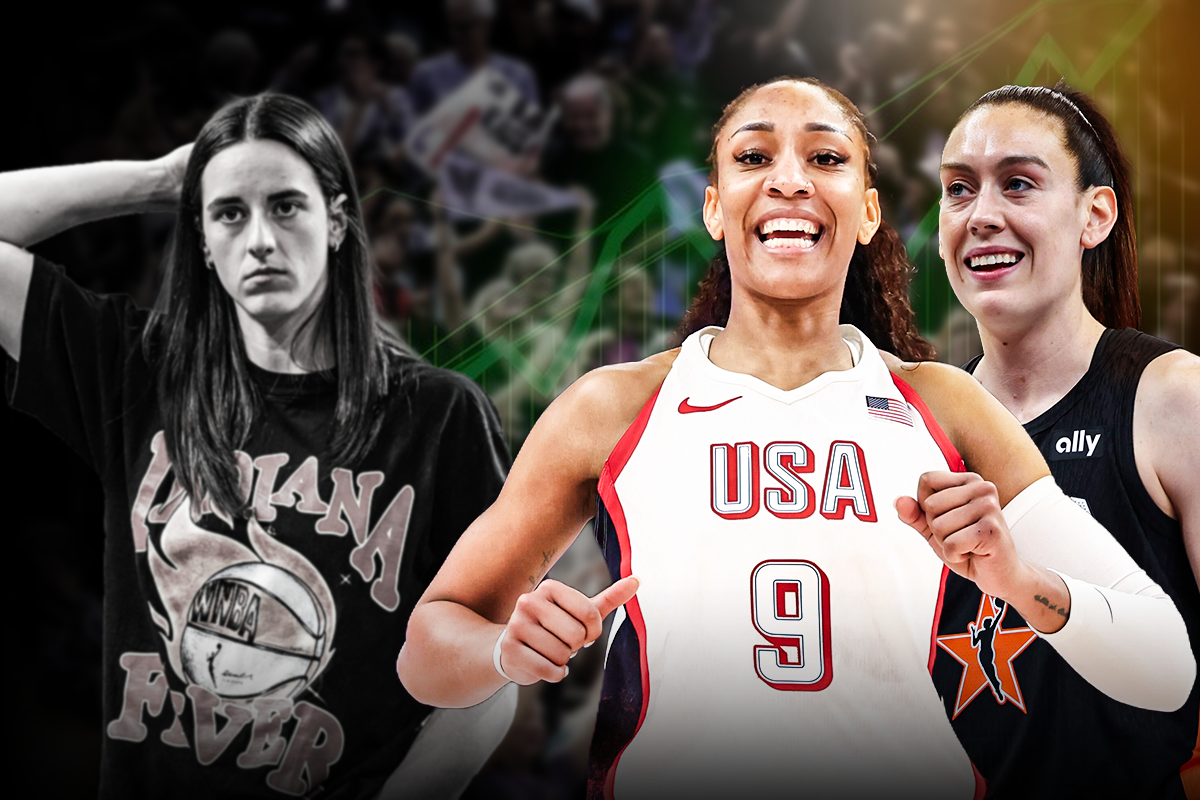
Imago
Credits: Imagn

Imago
Credits: Imagn
‘Can the WNBA continue to cook without Caitlin Clark?’ was the anxious question that hung over everyone at the beginning of 2025. Social media was obsessing, talk shows were spiraling, and someone even wrote a headline, “The WNBA’s challenge: How to translate the Caitlin Clark hype into sustained growth for the league.”
Watch What’s Trending Now!
When the postseason arrived, the league made it clear that it could win without help.
Even without Clark, sidelined since July due to an injury, the WNBA put up its most-watched postseason ever on ESPN.
ADVERTISEMENT
Alright, so check this out:
- The playoffs pulled in an average of 1.2 million eyeballs per game across 24 games, which, yeah, that’s a 5% jump from last year. And the Finals? Averaged 1.5 million viewers.
ADVERTISEMENT
Typically, storylines wane when it is just a one-sided contest (as the Finals were). Not this time, though.
Here’s how the games stacked up:
- Game 1: 1.9M (highest since 1997)
- Game 2: 1.2M
- Game 3: 1.3M
- Game 4: 1.4M
Indeed, Nielsen updated its system this year by integrating panel tracking, big data, and out-of-home viewer counts to provide a more accurate reading. Yes, that is helpful. But this isn’t a technical illusion. This is a league that is actually growing. And it’s doing it while balancing discussions about future expansion and collective bargaining.
Yes, Caitlin Clark is unique. She sells jerseys, shifts attention, and moves numbers. However, 2025 only served to highlight the fact that she is a part of a movement rather than its entirety. But let’s not forget that Clark was the primary force behind this growth.
The “Caitlin Clark effect” vs. the new baseline
Caitlin Clark made her WNBA debut with the Indiana Fever on May 14, 2024. But it wasn’t just a debut because it turned the game into a social spectacle rather than a sports competition. And that’s the dream of any newbie. Guess how many viewers it brought? 2.1 million viewers. Every network wanted a piece of the league after it became the most-watched WNBA game in 23 years.
The numbers kept coming.
- During the 2024 regular season, 23 games attracted over a million viewers.
- She was selected first overall in the 2024 WNBA Draft, which attracted the largest draft audience in league history with 2.45 million viewers.
- Just days later, her game against the New York Liberty drew 1.71 million viewers on ABC, becoming the network’s top WNBA broadcast ever.
It was clear. This was the Caitlin Clark Effect. But…wait, her influence wasn’t just cultural, it was financial.
Clark was credited with driving 26.5% of the league’s economic activity in 2024. But then, the unexpected…
Caitlin Clark’s injury that threatened to stall the momentum
In July 2025, a groin injury took her out for the rest of the season. Immediately, viewership for nationally televised games dropped by 55%. Many feared this was proof that the league’s momentum lived and died with one player.
But then, the unthinkable happened…
The 2025 WNBA regular season finished with its highest viewership ever, up 6% from the previous year. Even CBS saw a 16% bump in its WNBA coverage. And it wasn’t just game broadcasts. With 437,000 viewers per episode, ESPN’s “WNBA Countdown” pregame show saw a 30% increase in viewership.
The league maintained its momentum at a positive pace even though Clark was absent from the competition. As the best part, viewership increased by 3% overall. Yes, you heard it right!
What began as the Caitlin Clark Effect is now evolving into something much more significant: a new standard for the WNBA, one in which fan interest is linked to the league rather than a single player.
Surely, we can say Caitlin Clark has transformed into a new standard for the WNBA, which connects fan interest directly to the league instead of individual players. But how did all this happen?
Excitement! Simple technique, but it played a big role in keeping fans on their heels! The media created a frenzy when Las Vegas attempted to create a dynasty, while the Phoenix Mercury generated heated rivalries through their intense trash talk and social media content that fans actively consumed. The production team and promotional efforts created an increased sense of excitement throughout the entire event. Social media platforms became active with TikTok videos and Instagram-exclusive content.
What this means going forward: Business, bargaining, and big money
WNBA has evolved into more than just the story of Caitlin Clark because it now functions as a developing league that attracts more fans and generates substantial business revenue. As that’s the good news for WNBA players, it enables players to negotiate stronger positions during Collective Bargaining sessions for improved compensation and equitable revenue distribution.
But the gap to close is enormous. In 2025:
WNBA average salary: about $147,745
Max salary: around $241,984
NBA average salary: over $11 million
By raising team salary caps to almost $3 million, pushing top salaries close to $480,000, and increasing rookie pay, the new CBA seeks to reverse the trend. Although there has been progress, the gap is still very wide.
From a business perspective:
Increased sponsorships, higher ad rates, and expanding local deals are all correlated with higher ratings. Entering new markets like Toronto and Portland might open up new fan bases and sources of income. In 2024, the WNBA had nearly two billion video views, and teams like the Indiana Fever gained 150% more social media followers.
One thing is clear as we look to the future: the league doesn’t really need just one face (Caitlin Clark) to remain popular.
It’s past that. It’s bigger than that.
ADVERTISEMENT
ADVERTISEMENT
ADVERTISEMENT
ADVERTISEMENT

